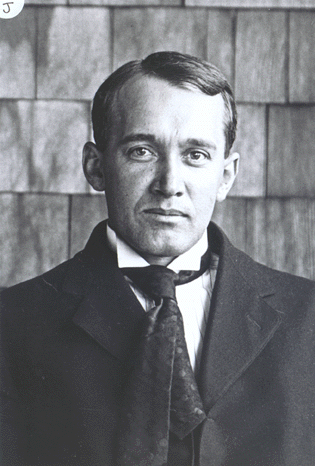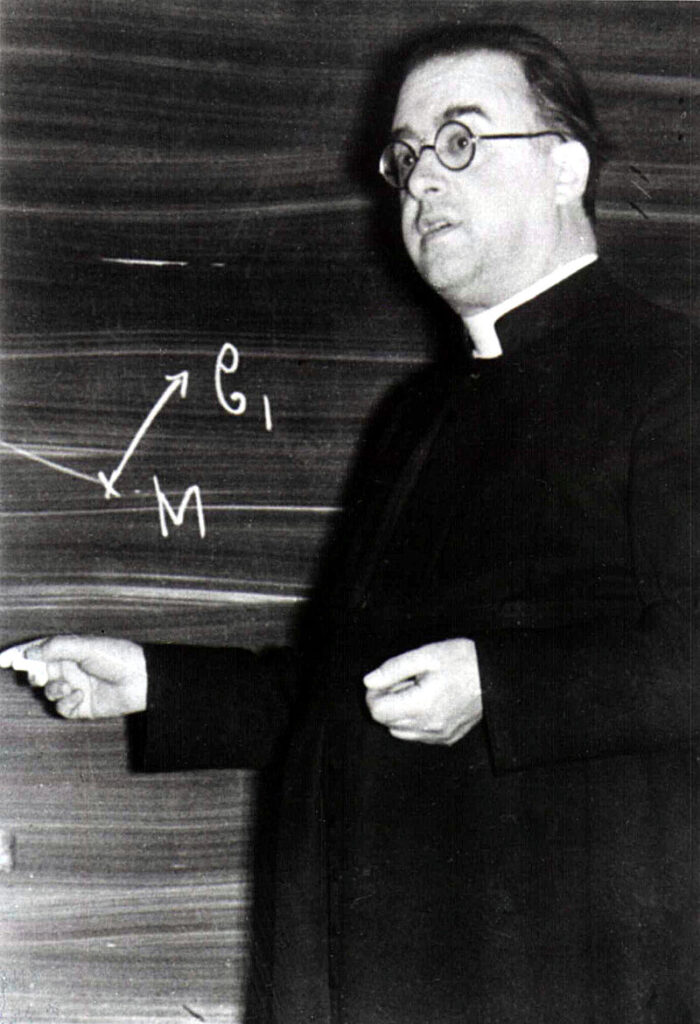If I were asked to name the scientists most closely associated with the Big Bang theory , I wouldn’t hesitate before saying Edwin Hubble and then, after a brief head-scratch, I would say Penzias and Wilson for their discovery of the Cosmic Microwave Background Radiation. I would not say Vesto Slipher, George Lemaitre or Robert Dicke. These are three of the scientists mentioned in Kevin Pretorius’s recent talk to the Society. The talk was a real tour-de-force and I could not begin to summarise any of the details and explanations he included. So I have contented myself with some research on the unsung heroes and this is what follows.
Vesto Slipher

Image Credit Wikipedia
Vesto Slipher spent most of his working life at the Lowell Observatory in Arizona. He developed great expertise in recording and analysing the spectra from objects in the night sky. Most specifically in the present context, he was the first to publish results about the shift in the line spectra of what we now know to be galaxies. This was in 1914. By 1917 he had found 21 cases of red shift and 4 of blue shift, one of these from what is now called the Andromeda Galaxy. There was at this time no way he could have gone on to develop the link that Hubble found between the recession velocity shown by the amount of red shift and the distance of the galaxy from us. The distances were simply not known. Indeed, the idea that the universe contains many galaxies had not even been developed. Slipher referred to the objects he was looking at as spiral areas of nebulosity.
The most unexpected piece of information for me is that Hubble was only responsible for collecting the distance data for his iconic graph of recession velocity v distance. He used Slipher’s data on red shift, without apparently giving him much credit for that contribution. In other words Slipher’s data was crucial to the development of Hubble’s work … and yet he is largely forgotten. Slipher’s relative anonymity seems to be attributed to his personality. I have seen him described variously as kindly, modest and co-operative. Sounds like a nice guy, and one who deserves to be better known.
Georges Lemaitre

Lemaitre was born in 1894 in Belgium and by the early 1920s he had served with distinction in World War 1, he had studied at Cambridge University, Harvard and MIT and he had been ordained as a priest of the Roman Catholic Church. He was the first person to propose the idea now known as the Big Bang Theory, though he termed it the Primeval Atom or the Cosmic Egg. He based his ideas on Einstein’s equations for General Relativity which could predict an expanding universe and on the results on recession velocities for galaxies. He was the first to “run the clock backwards” and realise that these observations must imply that the universe was once much smaller and could have expanded from a single point.
There are various reasons why his theory was not accepted at the time. (We are now at 1927, just prior to Hubble’s main published work). Most obviously, it is such an extraordinary concept that it seemed very unlikely to be correct. He was also handicapped by the fact that he had returned to Belgium and most of his work was published in French language journals without much circulation in the wider scientific community. He was not helped either by his status as a priest which led some people to think that he had concocted a theory which produced a “Creation moment” (my quotation marks) which suited both his scientific background and his faith. He vigorously denied this but the feeling stuck. His reputation did however begin to grow and it led to him being awarded a very prestigious scientific prize in Belgium in 1934 having been nominated for it by Einstein, a pretty compelling recommendation!
Robert Dicke
Robert Dicke must be the unluckiest of my three unsung heroes. He had done some theoretical work which led to a prediction about the existence of Cosmic Microwave Background Radiation. In 1966, he was setting up a project to look for this radiation at almost the exact same time that Penzias and Wilson made their accidental discovery of it. Once they became aware of one another’s work, they agreed to publish simultaneously in the same journal. It was though Penzias and Wilson who went on to receive the Nobel Prize for their discovery. It is ironic to note that they were using a microwave detector which has been designed by Dicke and indeed was known as the Dicke detector.
I’d just like to add one more story I found in my researches about one of the better-known scientists featured in this post. Arno Penzias was born in 1933 to a Jewish family living in Munich. He was evacuated to Britain in 1939 during the Kindertransport rescue operation; his parents later made their way safely to USA and he was reunited with them there.
Thank you Kevin for a great talk. It gave me lots to think about, both on the scientific side and on the more personal side.
Talk given by FAS member Kevin Pretorius
Post written by Katherine Rusbridge
Oct 2015
